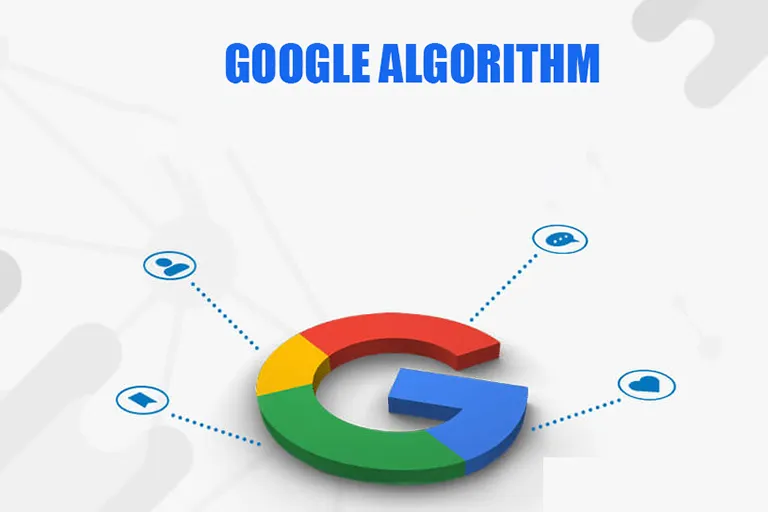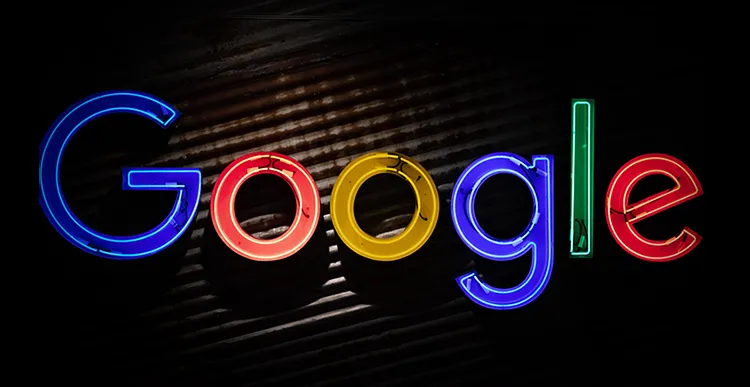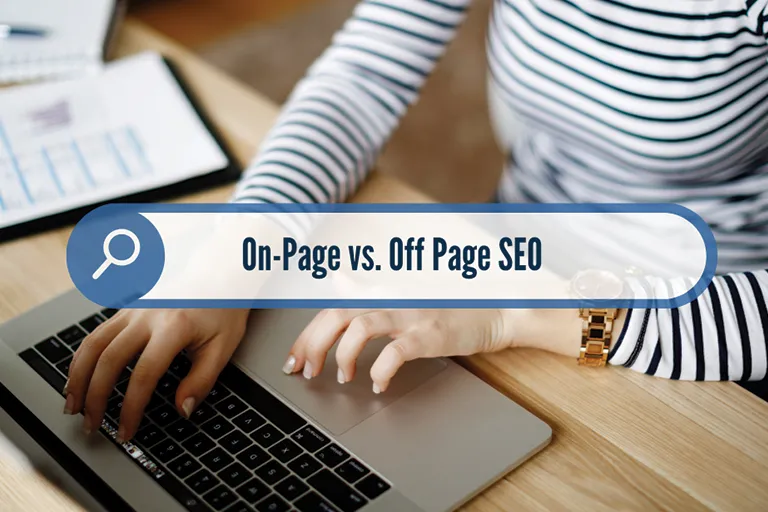In this article, I’m going to check some things about Google’s algorithms and the effects it has on the work of SEO experts, but before we start, I’d like to read the following list.
- More than 2 million posts are published with WordPress every day.
- Google processes 40,000 searches every second.
- Nearly 4 billion searches are performed on Google every day.
- Google’s share of search on the Internet is close to 90%.
- 90% of users like to click on organic results rather than advertising results.
- 90% of users reach their desired result on the first page and only 10% of users go to the next pages.
- 67% of users click on the first 5 searches. That is, almost a quarter of users skip the first 5 results and look at the rest of the search list.
- Google has more than 200 factors or signals or parameters for ranking sites.
This information clears your mind to continue working. When the user gets to work and searches on Google, a complex operation is performed and the results are usually shown to the user in a fraction of a second. But what exactly is behind this complex operation?
With the help of its various algorithms, which are known as Google algorithms, Google takes the relevant query from the user and lists and shows a list of results by checking various parameters.
It is Google’s algorithms that give meaning to rankings. It is because of these powerful algorithms that today Google is the best and most successful search engine in the world. In this post, we introduce Google algorithms.
What is the algorithm?
Algorithm Yadgar Kharazmi is an Iranian mathematician and scientist. Algorithm means carrying out a series of instructions for a limited time in order to solve a problem. Algorithm is very important in computer science and it means a calculation routine that receives input and produces appropriate output by performing relevant calculations.
What is the Google algorithm and how does it work?
Google wrote in its blog that when you do a search, you are looking for an answer. Not a billion pages in results. So there should be a system that shows you the most relevant and useful results among the indexed pages. Pay attention that Google has used exactly these two words (useful and relevant), that is, this very sensitive work is done by Google’s algorithms.
In a word, Google algorithms are a series of complex mathematical calculations that, in simple words, make a targeted search possible for the user.
Today, we will enter the fascinating Google Zoo and get to know each and every one of its lovely animals. Every webmaster or site owner should know these algorithms and be careful that his site does not anger these lovely animals. Every webmaster should have at least a general understanding of Google’s algorithms.
An SEO or a business owner who manages a website should read regularly and be up to date. Google sometimes updates its algorithms daily. According to the reliable site Moz, Google changes its algorithms 500 to 600 times a year. Sometimes these changes are very small and do not have a significant impact on the SERP . Sometimes the changes are so serious that they overturn the results. So studying and understanding how Google’s algorithms work and the impact they have on the site’s SEO and reaching the first page of Google is a must.
List of Google algorithms
In the following, we will review the 13 important algorithms of Google together.
1- Panda algorithm
Google Panda is one of Google’s most famous algorithms and a real savior for rich and excellent content. After Panda, content creation and writing in the web world got a new meaning. Google used Panda to measure the quality of web pages based on their content. Google Panda is responsible for fighting against poor content and penalizing sites that produce poor quality content.
What is poor quality content?
Content that does not convey any value to the user. Panda hates duplicate content. Panda hates spam content. Panda does not have a good relationship with Thin Content or weak content.
But an important question is what is really meant by Thin Content, which is sometimes translated as thin content? In the list below, I have written the types of weak content.
- Duplicate content
- Automatic content generation (by bot)
- Doorway pages (in general, pages that open a back door to other pages that are not the user’s destination)
- Copying content from another site (sometimes with very minor changes)
- And to conclude: any content that is not unique and useful.
Initially, Google Panda was just a filter in Google’s core algorithm. But in 2016, it followed its work as a separate and effective algorithm. If you use plagiarism, copy content, duplicate content, keyword stuffing and other activities related to the production of a worthless or low-value content on your site, you should beware of the wrath of Google Panda.
Panda likes sites that have strong On Page SEO .
2- Penguin algorithm
We know that backlinks are a serious signal in Off Page SEO . But don’t forget that backlinks should be earned naturally. Not to be built.
When site managers realized that Google gives special importance to backlinks for ranking, they started buying backlinks from different sites. Hoping that Google will give them a good ranking due to their high number of backlinks. So extreme link building or spam link building was widely used.
This is where Google hired Penguin to keep an eye on links. We know that for any web search engine like Google, links play a very important role.
Google follows sites with the help of links. But if it finds out that you are trying to abuse the power of links and change your real rank, it will notify Penguin.
Since 2016, Penguin has been added to the core of Google’s algorithm and works in real time. That is, unlike Panda, it can immediately penalize a site that has poor quality backlinks. This speed of action in the reaction of the penguin also has a positive point. That you can win his heart just as quickly and by modifying the behavior of the site, he will return to the previous days. Penguin is one of the most serious and caring algorithms of Google.
When does Google Penguin feel threatened and come into action?
Google Penguin is smart and likes natural and normal link building in the web world, and when it encounters any of the following, it senses danger and takes action.
- Getting links from sites with low quality and a large number
- Getting links from a large number of unrelated sites
- Buy backlinks
- Getting too many links on a specific anchor text
- Over Optimization or extreme optimization
So don’t try to change the search results by building many links. This is where Google Penguin comes in and penalizes your site.
Regularly check the incoming and outgoing links of the site. Never forget that backlink quality is much, much more valuable than its quantity.
3- Hummingbird algorithm
This is one of the most interesting and useful Google algorithms. Google named this algorithm Hummingbird for two reasons. One is speed and one is accuracy.
A few years ago when I was doing a search on Google (around 2010 and 2011), I still remember how Google would list me strange and unexpected results. Still, if you work with weak search engines, the memories of those days will come alive for you and you will understand what I mean. But today, Google analyzes the user’s query well and lists useful results for him. We owe these relevant and accurate results to a large extent to the hummingbird algorithm .
This Google bird tries to list search results based on the search intent. Not based on keyword intent.
With the help of Hummingbird, Google digs deeper into search terms and includes synonyms in its analysis.
The pinnacle of hummingbird art appears when you enter a long phrase or a colloquial phrase or a query phrase in the search box. Here, Google uses the power of its algorithm to show the most relevant results according to the user’s goal. Not just the keywords used in the phrase.
Try it now and search on Google “how to host your site”. Search for this phrase and analyze the results. it is interesting. See how Google tries to check the meaning behind the user’s phrase. This is exactly what hummingbirds do.
Don’t depend on a specific keyword to get hummingbirds to like you. Include different keyword combinations in your text.
4- Pirate algorithm
Google Pirate loves user rights. This algorithm strongly opposes the free distribution of a paid work (movie, book, music, etc.). Google Pirate is responsible for penalizing sites that violate copyright law. This algorithm has a simple structure in general. Perhaps we can summarize the algorithm in the following two steps:
- Search and find sites that violate copyright
- Downgrade those sites
In Iran, unfortunately, the right of a work is easily violated. Now how to be safe from Google pirates?
Do not publish anyone’s content without mentioning its source. that is all
5- Pigeon algorithm
We said that Google has more than 200 parameters for ranking sites. But there was never any talk about the location of the user until the head of the Google pigeon was found. This algorithm beautifully connected 2 Google products. One is google search and one is google map. Pigeon is a great opportunity to show local businesses to local users.
After this Google update, directory sites became very popular. Directories are reference sites that categorize other sites.
The appearance of the search also had interesting changes. In local searches, Google will show you a box that is known as a three-pack.
6- Blind mouse algorithm
Maybe you remember the pigeon. But the blind mouse algorithm focuses more on local search based on user location and business address. This algorithm mostly deals with business owners and those who have a Google My business account.
After Possum, Google shows more diverse results based on the user’s physical location. That is, the closer you are physically to a business, the more chance you have of seeing that brand in local search results.
7 – Mobilegeddon algorithm
Smartphones have revolutionized our lives. Maybe a few years ago, optimizing the site for mobile was funny, but today it is considered a necessity.
In 2015, Google sounded the alarm and warned site owners to design their website in such a way that it can be seen well on small screens such as mobiles or tablets. Responsive site is mandatory nowadays.
Google named this algorithm Mobilegeddon and an important challenge was formed in the web world. I think April 21, 2015 was an important day for websites. Because Google officially announced in its blog that we consider mobile-optimized pages as a plus point in searches performed on mobile.
Of course, in the same article, Google mentioned that optimizing the site for mobile is one of the many ranking signals of sites, and it is possible that a site that has excellent content for user query but is not mobile friendly, may have a better position in the results.
Note that the Mobilegeddon update includes the following:
- Search results are only affected on mobiles.
- Search results include all languages and are not limited to a specific region.
- Each page is ranked separately.
Don’t worry if your site is not optimized for mobile. As soon as you change the structure of the site and design the responsive version, the pages will be re-indexed and you will get the Mobile Friendly score.
8 – Rank Brain algorithm
Google’s mastermind is the Rank Brain algorithm. This algorithm helps to process search results with the help of artificial intelligence and machine learning.
Rank Brain is a computer program that finds the most relevant ones among the billions of pages indexed in Google with the user’s query. At the time of unveiling this algorithm, Google announced it as the third most influential parameter in ranking.
In short, Rank Brain understands what a page is about. It evaluates that page with the user’s query and improves itself over time. This algorithm takes into account the influential parameters that we discussed in the internal SEO or On page SEO training section.
Things like links, keyword usage, etc. But it also has a structure that recognizes the importance of pages, such as bounce rate and so on.
Rank Brain is similar to a hummingbird. Likes to explore the concepts behind search and understand user behavior. He is also very interested in growing and learning. Rank Brain changes itself every day according to user behavior.
9- Zebra Algorithm
When online sales and online stores started, no one thought that they would be a dangerous competitor to physical stores. But today the turnover of the Amazon site alone shows that online shopping has become an important part of our lives.
In our country, popular stores like Digikala introduced the public to online shopping. Virtual stores have certain sensitivities. Because users are supposed to trust the site and enter their bank card information on this website. This is where Google Zebra decided to enter.
The zebra algorithm had an important mission. Cleaning the web world of low-quality and unsafe stores that might take the experience of a safe and attractive purchase from the user. According to Zebra, a good store has the following conditions:
- Having an SSL certificate
- The convenience of the user in shopping and reducing the purchase steps as much as possible
- Displaying the store on different devices such as mobile phones, tablets, etc.
- Having attractive features such as comparing products or calculating the estimated time of product arrival, etc
- Use of appropriate discounts and discount coupons
- Anything that conveys a sweet online shopping experience to the user
10- Odd’s algorithm
Advertising is a great way to generate income for businesses. At Tik Tok, we welcome interesting product ads. Google itself has a very, very high income through advertising. No one denies that advertising is good. But at what price?
Do you also deal with sites that only have advertisements and their site content is lost between advertisements?
Unfortunately, the number of these sites is very large in Iran. Fred is one of the smartest Google algorithms. A part of Fred’s algorithm is related to sites whose purpose of content creation is only SEO principles and do not care about the user. Sites that just want to rank well to get more ads and don’t care much about user needs.
After Panda, Google introduced Fred to show how important content is to it and should be taken seriously.
Fred is not just about advertising. Fred is Google’s new solution to deal with irrelevant and low-quality content.
11 – Payday Leon algorithm
This algorithm was an interesting solution by Google to fight against spam sites and spam queries. The name of this algorithm refers to a type of loan in America and it does two basic things. First, it fights against spam sites. Second, it checks for spam search terms by people.
Obscene words, loans with a very high amount, loans with daily payments, casinos and other financial areas such as mortgages and insurance, etc. are affected by this update. Payday Leon algorithm has been applied in most countries including Iran. Payday Leon is one of Google’s solutions to fight Spam.
12 – Page Layout Algorithm
Again we come to advertising. Believe me, extreme ads are extremely annoying and Google regularly includes this issue in its algorithms. The Page Layout algorithm checks that a site does not have too many ads in its header or upper part so that the user can reach the main content and functional parts of the site without any problems.
Google announced that only 1% of all sites were affected by the Page Layout algorithm. But it was a good thing for these sites to understand that there is something more important than advertisements, and that is the user’s enjoyment of interacting with the site.
This algorithm has nothing to do with sites that get ads naturally and there is no problem with these sites.
If you have a site that has a lot of ads in the top part of the site (Header), you will probably come across Google Page Layout.
13- Algorithm of caffeine
This last one is a bit strange. In fact, Google is not an algorithm. It has no effect on the ranking of sites. That is, no site was punished by presenting this algorithm.
Caffeine was created to revolutionize Google’s index system. The first Google index system was designed in 1998. The caffeine algorithm was introduced in 2009 and evolved in 2010. But why did Google change its index system? The answer is clear.
In 1998, there were approximately 2.5 million websites and 188 million users using the Internet.
In 2009, there were approximately 238 million sites online and 1.8 billion users wanted to access these sites.
The old index system had problems here and a fundamental change was needed. That’s why Google Caffeine was presented.
In the end, if you have any experience with the effects of Google’s algorithms, please share with us.














